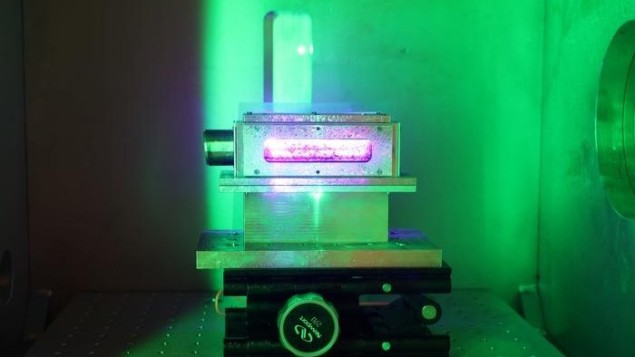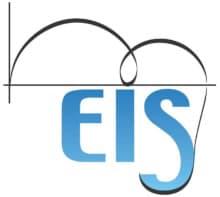
A highly stable laser wakefield accelerator has been created by Bjorn Manuel Hegelich at the University of Texas at Austin and an international team. Their device uses nanoparticles to put electrons directly into its plasma wave, accelerating the electrons to energies as high as 10 GeV.
First proposed in 1979, laser wakefield acceleration offers a way to create compact particle accelerators that can reach energies that are normally the preserve of kilometre-sized facilities.
The acceleration process involves firing an intense laser pulse into a small cell of low-density gas. The light ionizes atoms and molecules in the gas to create a plasma. In the highest-intensity regions of the laser pulse, the electric field separates the lightweight electrons from the heavier ions. Once the pulse has passed, the electrons rush back to the ions, triggering a plasma wave that propagates through the cell much like the wake of a boat.
Huge gradient
This plasma wave has an oscillating electric field that resembles the electromagnetic waves that drive particles through conventional accelerators – but the plasma wavelength is much shorter. The result is an acceleration gradient that can be three orders of magnitude greater than those found in conventional accelerators.
Over the past few decades, physicists have achieved several important milestones in perfecting the design and operation of the laser wakefield accelerator. However, it remains a significant challenge to produce stable electron beams. One important problem is how to ensure that the electrons to be accelerated are in the right place at the right time to get the most out of the wakefield.
In their study, Hegelich’s team tackled this challenge with a modified accelerator setup that features a removable metal plate at the bottom of a helium gas cell. The acceleration process begins by firing a pulse from an auxiliary laser at the plate. This releases aluminium nanoparticles, which mix uniformly with the gas.
The gas is then ionized with a powerful pulse from the Texas Petawatt Laser, which creates the plasma and also releases electrons from the nanoparticles.
Right place, right time
“The nanoparticles release electrons at just the right point and just the right time, so they are all sitting there in the wave,” Hegelich explains. “We get a lot more electrons into the wave when and where we want them to be, rather than statistically distributed over the whole interaction.”

New particle accelerator is driven by curved laser beams
As a result, the team could produce far more stable and consistent electron beams than previous designs. They generated beams at energies in the 4–10 GeV, from a device just 10 cm in length. In comparison, the linear accelerator at the European XFEL in Hamburg accelerates electrons to 17 GeV over a distance of 2.1 km.
For now, the researchers do not have good theoretical understanding of why their system works so well, so they plan to explore the nanoscale mechanisms in more detail.
The team hopes that future generations of laser wakefield accelerators will benefit from their research. The development of practical, room-sized accelerators could be useful across a broad range of fields including materials science, medical imaging and cancer therapy.
The research is described in Matter and Radiation at Extremes.



